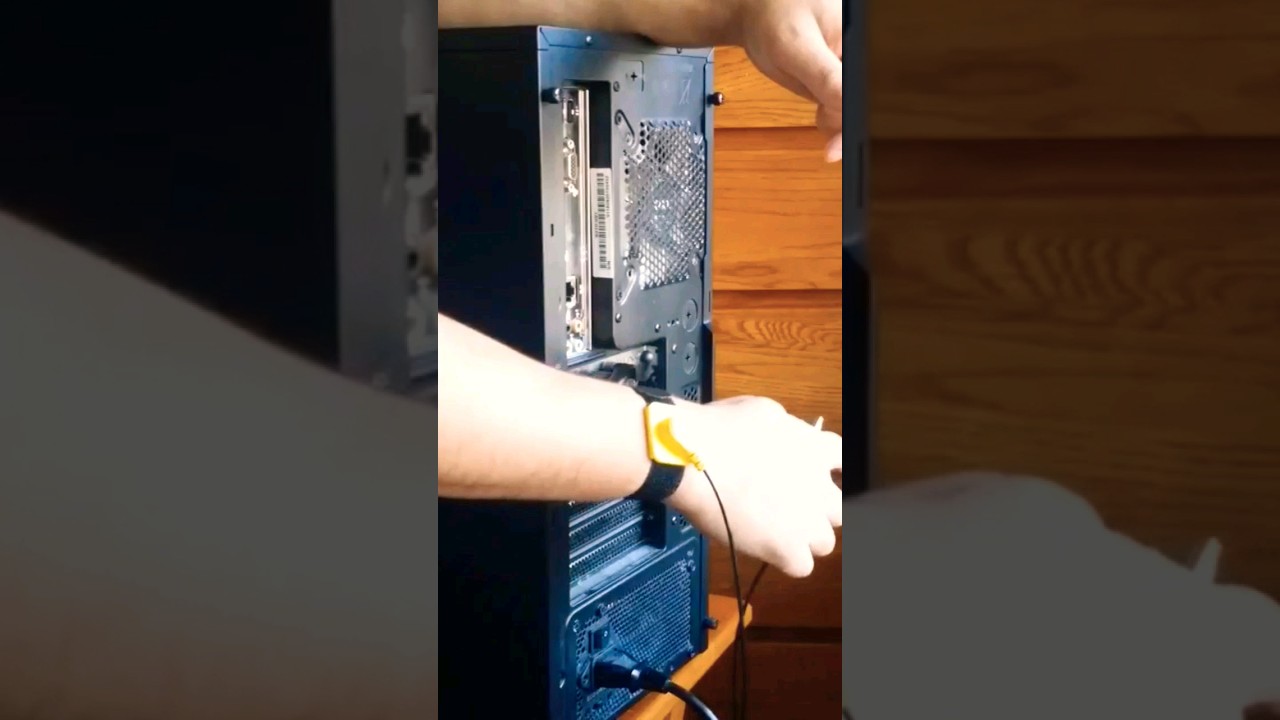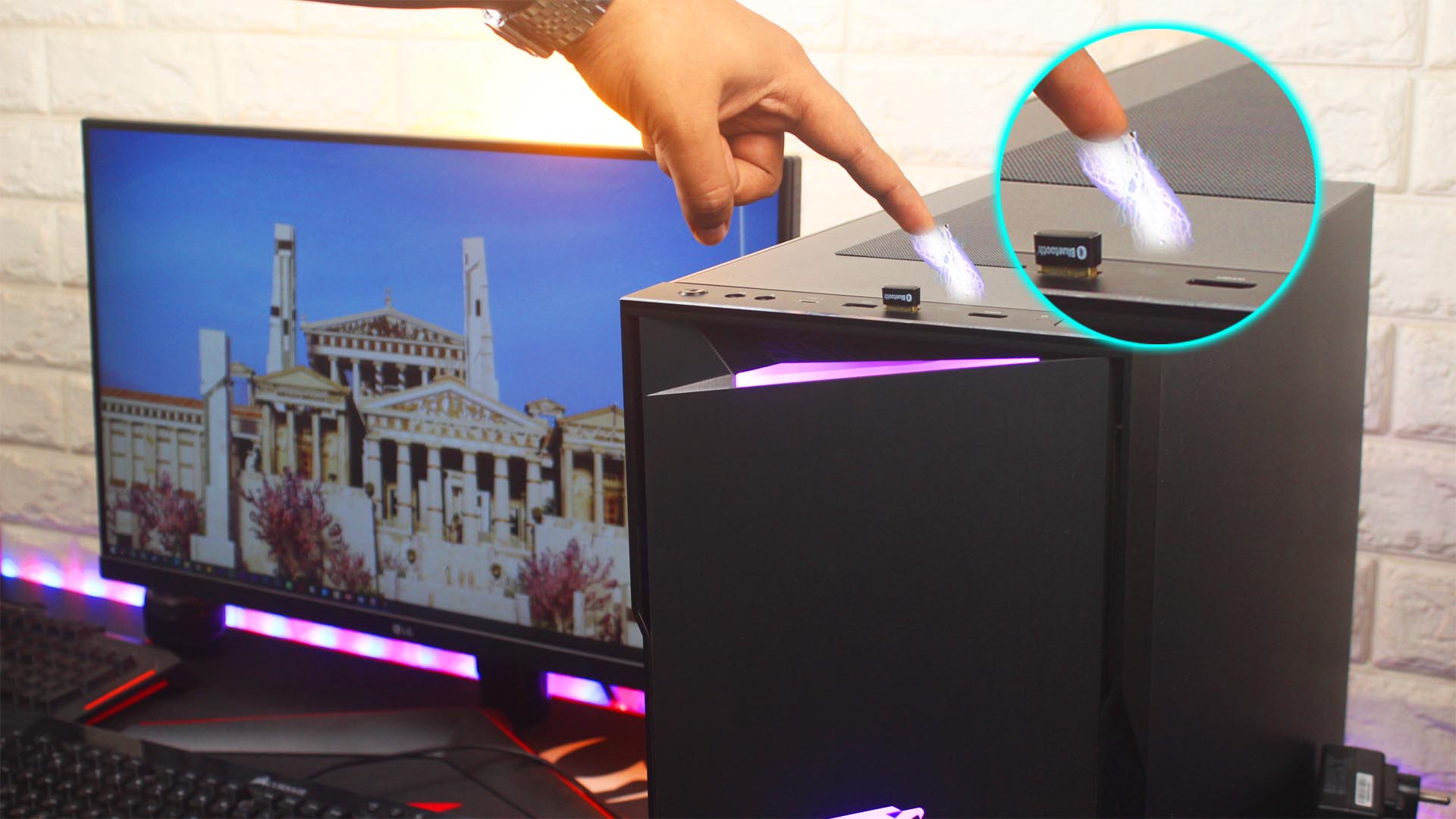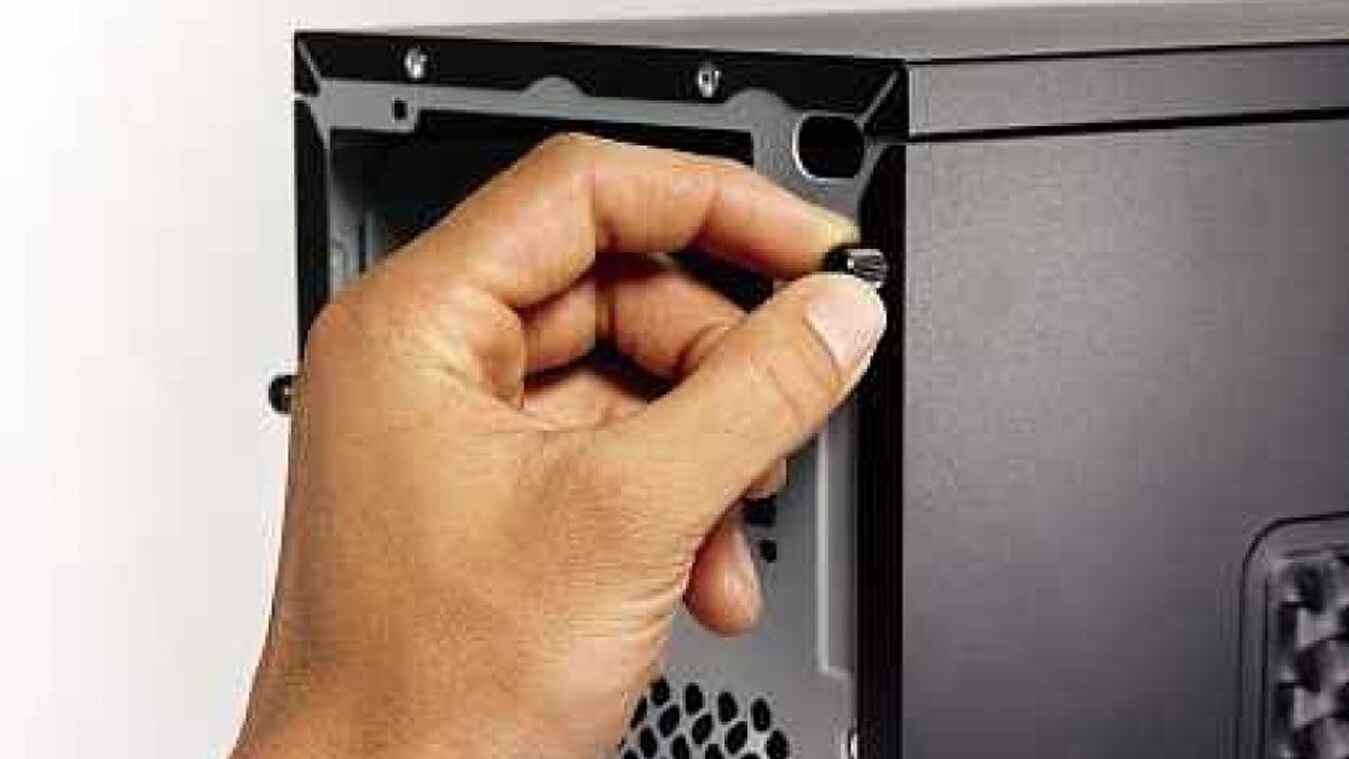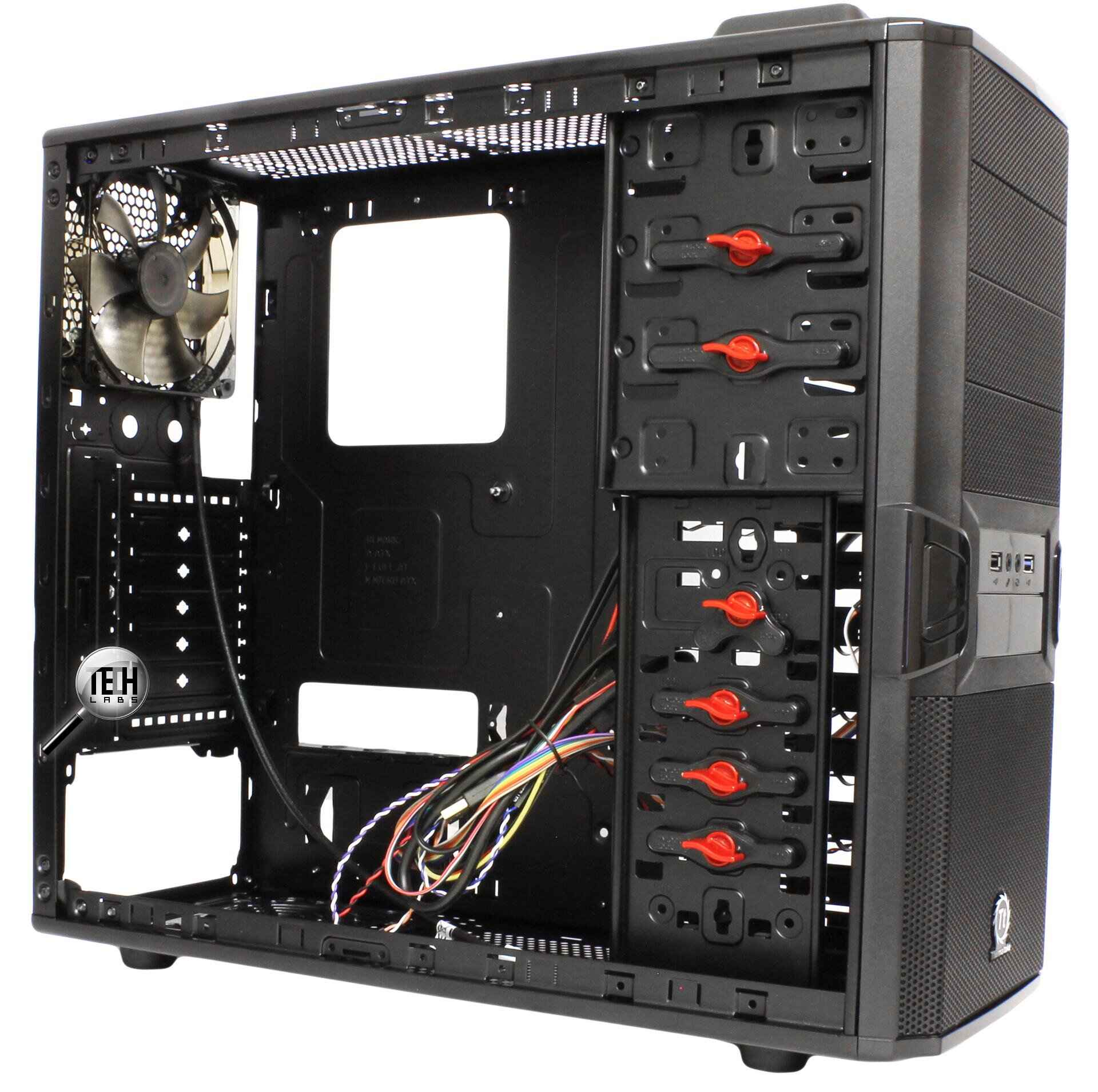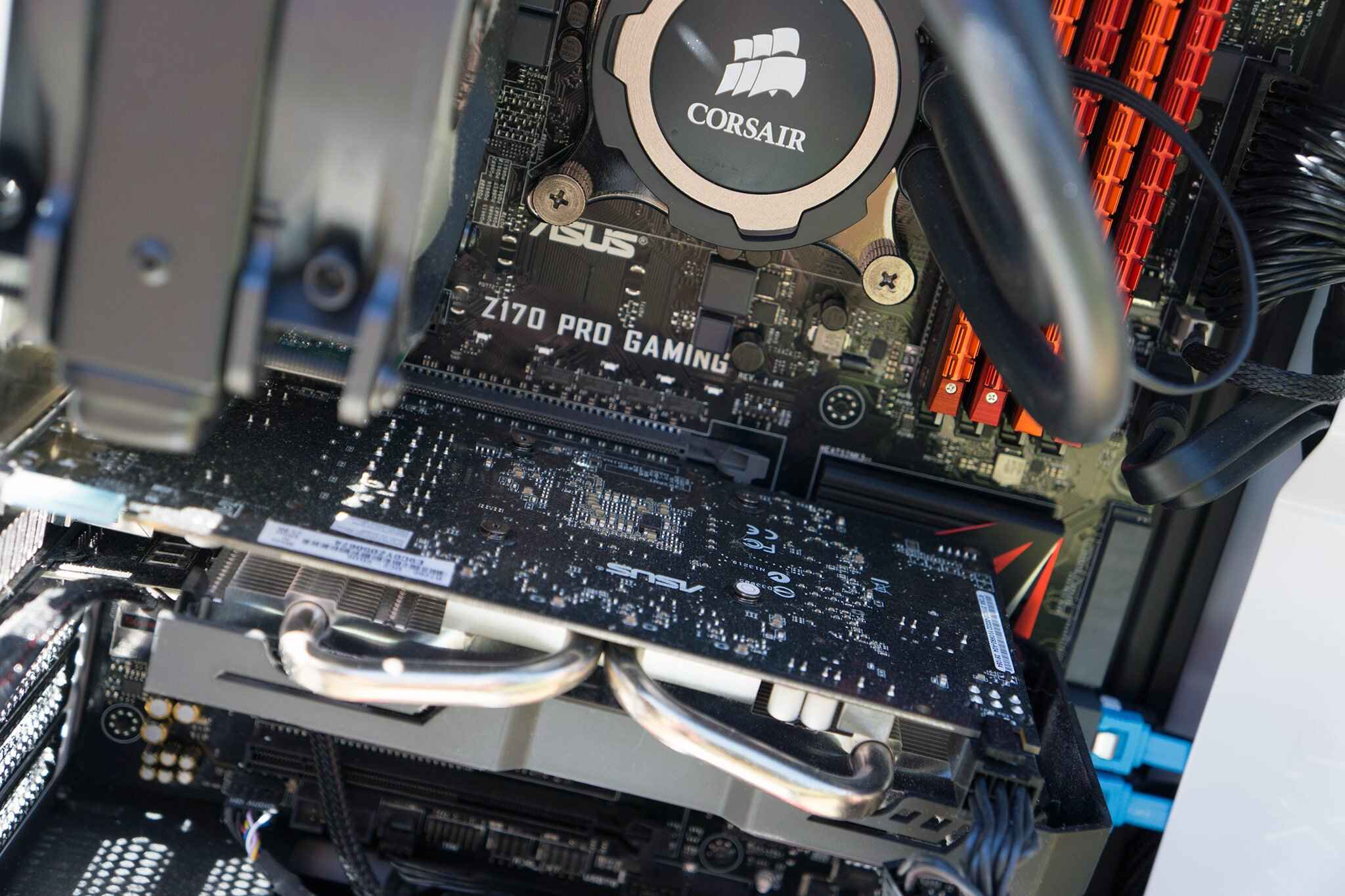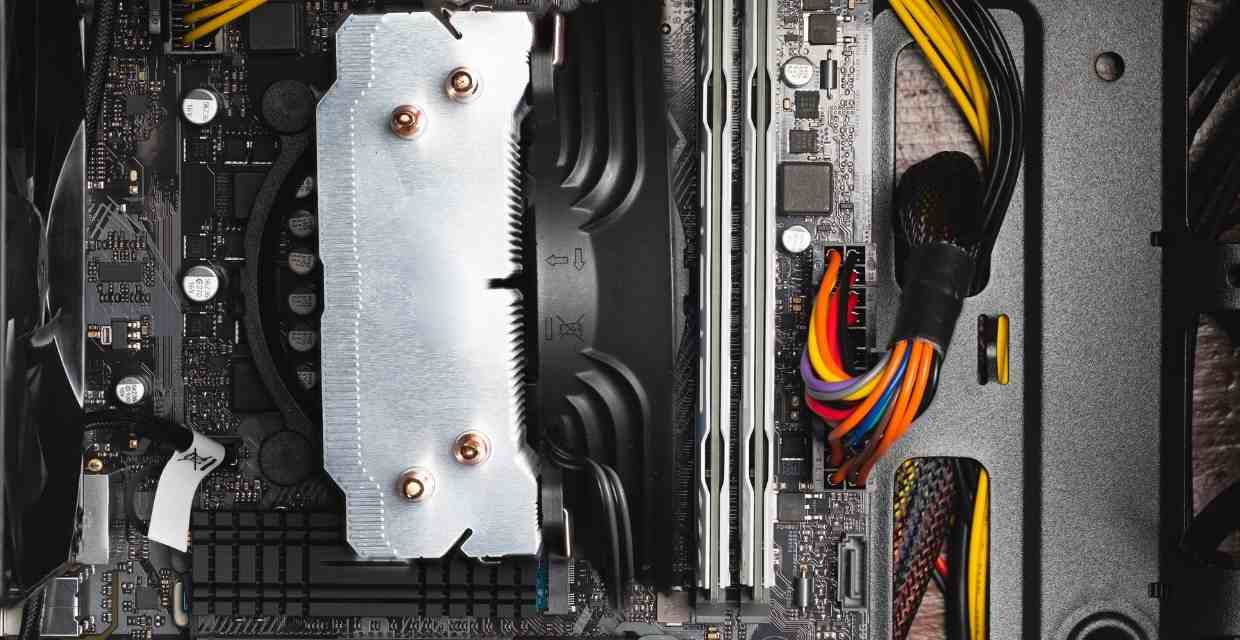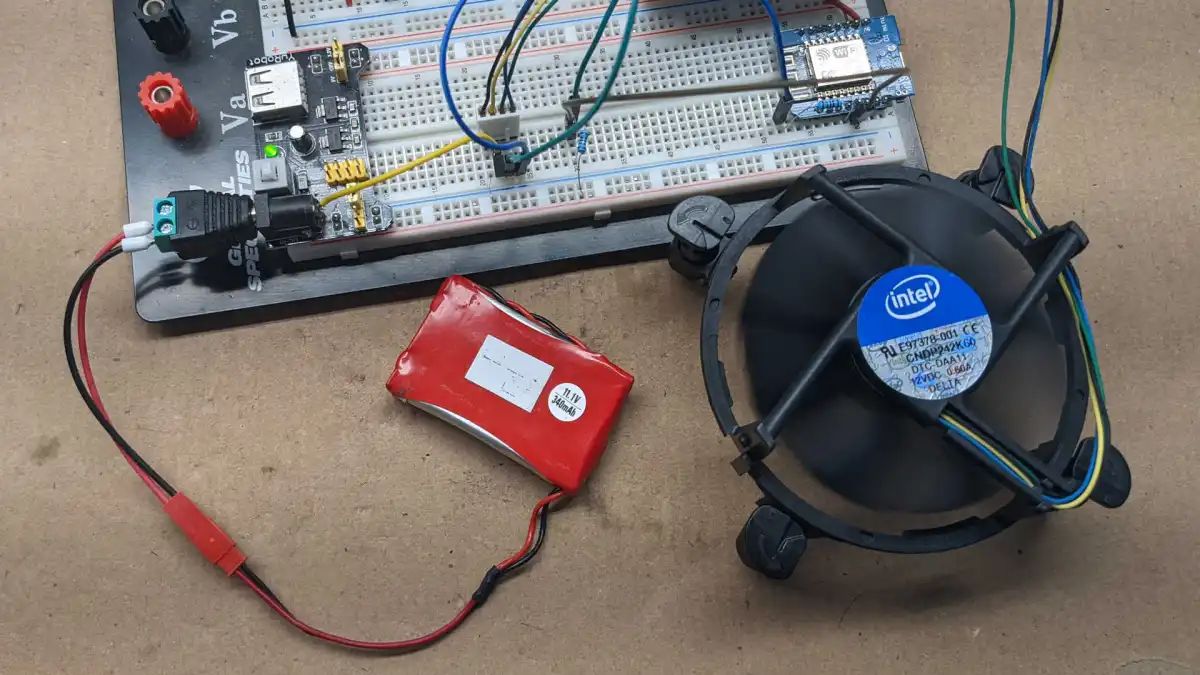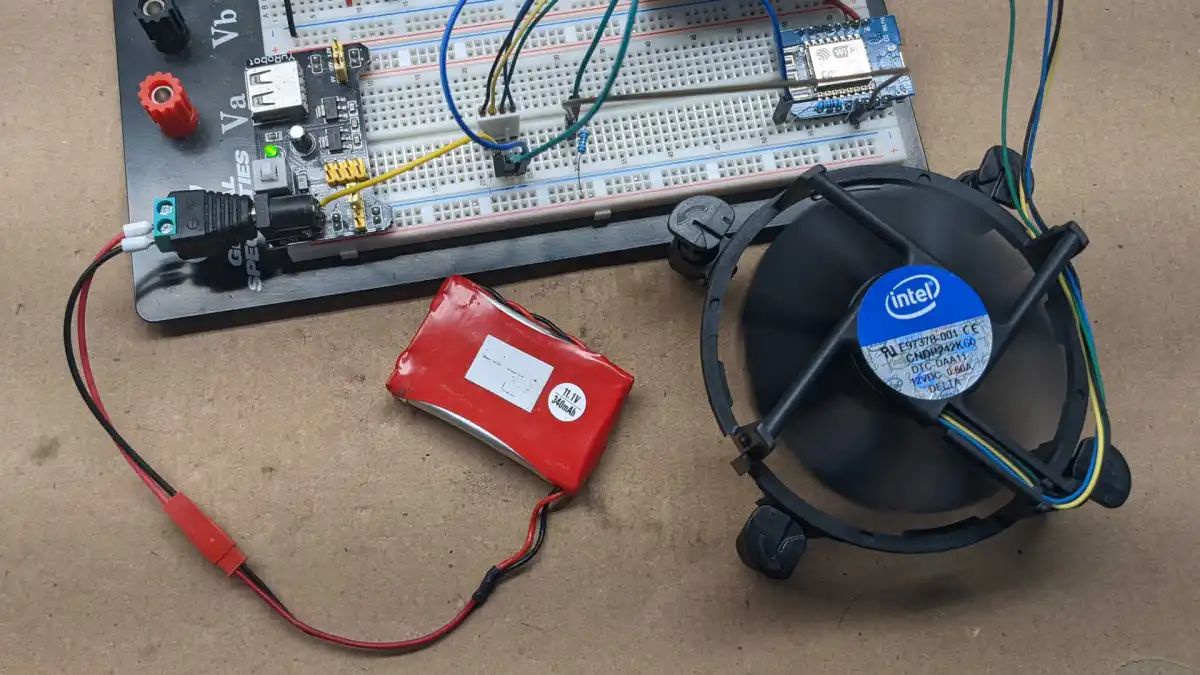Why Grounding Yourself is Important
When it comes to building or working on a PC, one crucial aspect that often gets overlooked is grounding yourself. Grounding is the process of removing any static electricity from your body to prevent it from damaging sensitive electronic components. It may seem like a small detail, but neglecting to ground yourself can have serious consequences for your PC’s performance and longevity.
Static electricity is an ever-present threat when handling electronic devices, especially when you consider the friction caused by movement and the materials we typically work with, like carpet or synthetic fabrics. Without proper grounding, the static charge can easily transfer from your body onto the PC components, wreaking havoc on their delicate circuitry.
One of the main reasons grounding yourself is important is to protect your PC from electrostatic discharge (ESD). ESD occurs when an accumulated static charge on your body finds a path of least resistance to discharge, potentially causing irreversible damage to the sensitive components of your PC. This can result in malfunctions, loss of data, or even complete system failure.
By ensuring that you are properly grounded, you create a path for any built-up static charge to follow, rather than allowing it to discharge onto your PC components. This significantly reduces the risk of ESD and protects the integrity of your PC’s electronic parts.
Moreover, grounding yourself also helps to safeguard your own safety. While the voltages involved with static electricity are relatively low, they can still cause discomfort or minor shocks. By grounding yourself, you minimize the chances of experiencing any unpleasant or potentially dangerous electrical shocks during your PC building or maintenance process.
Additionally, proper grounding can improve the overall performance and stability of your PC. When static electricity interferes with the delicate electronic signals inside your PC, it can lead to signal degradation, electromagnetic interference, and other issues that can impact the performance of your system. By grounding yourself, you eliminate this interference, resulting in a more reliable and efficient PC.
Overall, grounding yourself is an essential step to protect both your PC and yourself from the dangers of static electricity. By taking the time to properly ground yourself before working on your PC, you can ensure the longevity of your system and maintain its optimal performance. In the following sections, we will delve into the specific risks of not grounding your PC case and guide you through the process of grounding your PC case step by step.
Common Risks of Not Grounding Your PC Case
Not grounding your PC case may seem like a small oversight, but it can lead to various risks and issues that can affect the performance and lifespan of your computer. Understanding these risks is crucial to emphasize the importance of proper grounding. Let’s take a closer look at the common risks associated with not grounding your PC case.
1. Electrostatic Discharge (ESD): The most significant risk of not grounding your PC case is the potential for electrostatic discharge. When static electricity builds up on your body and comes into contact with sensitive electronic components, it can cause irreparable damage. ESD can lead to malfunctioning parts, data loss, and even complete system failure.
2. Component Damage: Modern PC components, such as motherboards, CPUs, and graphics cards, are delicate and sensitive to even the smallest electrical jolt. Without proper grounding, the risk of damaging these components increases significantly. The discharge of static electricity can result in fried circuits, burnt-out transistors, and other costly damages.
3. System Instability: If your PC components experience ESD, it can lead to a range of stability issues. Erratic behavior, frequent crashes, and spontaneous reboots are not uncommon when components are subjected to static electricity. These issues can disrupt your workflow, cause data loss, and lead to frustration.
4. Reduced Lifespan: Components that have been exposed to ESD are more likely to experience a shortened lifespan. Continuous exposure to static electricity can degrade the performance and reliability of your PC over time. Investing in proper grounding practices helps ensure that your components last longer and operate at their optimal level.
5. Increased Maintenance and Replacement Costs: Neglecting to ground your PC case can result in higher maintenance and replacement costs. Repairs and replacements for damaged components can quickly add up, putting a dent in your budget. By simply taking the time to properly ground your PC case, you can save yourself from unnecessary expenses.
6. Frustration and Downtime: Dealing with a malfunctioning or non-functioning PC can be incredibly frustrating, leading to wasted time and productivity. Not grounding your PC case increases the likelihood of encountering issues that require troubleshooting and potentially lengthy downtime. By grounding your PC case, you reduce the chances of encountering these frustrating situations.
It is evident that neglecting to ground your PC case comes with serious risks that can impact both your computer’s performance and your overall user experience. Taking the necessary precautions to properly ground your PC case will mitigate these risks and ensure a smooth and long-lasting computing experience.
Understanding Static Electricity
Static electricity is a phenomenon that we often encounter in our daily lives, but its potential to cause damage to electronic devices, including PCs, is often underestimated. To appreciate the importance of grounding, it’s crucial to have a basic understanding of static electricity and how it can affect our PC components.
Static electricity is the accumulation of electric charge on the surface of an object, typically caused by the transfer of electrons between materials. It primarily occurs when two materials rub against each other, causing friction and resulting in the transfer of electrons. This transfer creates a positive charge on one object and a negative charge on the other.
When it comes to PCs, static electricity poses a significant risk because many of the key components, such as the motherboard, CPU, and RAM, are extremely sensitive to electrical charge. These components are designed to operate on low voltages, making them highly susceptible to damage if exposed to high levels of static electricity.
One important concept to understand is electrostatic discharge (ESD), which occurs when the accumulated static charge on an object finds a path of least resistance to discharge. This discharge can be sudden and carry high voltages, capable of damaging the delicate electronic components inside your PC.
ESD can occur in various ways during PC assembly or maintenance. Simply walking across a carpeted floor or sliding your hands across synthetic fabric can generate enough static electricity to cause harm. Other common sources of ESD include improperly grounded work surfaces, static-prone clothing, and the handling of plastic packaging.
It’s worth noting that the human body can store a significant amount of static charge, and when in close proximity to sensitive electronics, this charge can be easily transferred. That’s why grounding yourself is so crucial when working on a PC. By grounding, you provide a safe path for the built-up static charge to follow, preventing it from discharging onto the components.
Understanding static electricity and its potential hazards helps emphasize the importance of proper grounding practices. By taking the necessary precautions to discharge any accumulated static electricity from our bodies and working environments, we can protect our PC components from damage and ensure their continued performance and longevity.
Tools Needed for Grounding
Properly grounding yourself and your PC case requires a few essential tools to ensure effective and safe discharge of static electricity. Before we dive into the step-by-step process of grounding, let’s take a look at the tools you will need:
1. Anti-Static Wrist Strap: An anti-static wrist strap is one of the most important tools for grounding. It is a wristband with a conductive strap that you wear during PC assembly or maintenance. The strap connects to a grounding point, typically an unpainted metal surface or a grounding mat, to drain static electricity from your body.
2. Grounding Mat: A grounding mat provides a controlled pathway for static discharge. It is a mat that you place on your work surface, creating a conductive surface that can be connected to a grounding point. By placing your PC case and other components on the mat during assembly or maintenance, you ensure that any built-up static charge is safely discharged.
3. Grounding Cord: A grounding cord is used to connect your anti-static wrist strap or grounding mat to a grounding point. It typically has alligator clips at both ends, allowing you to easily attach one end to your wrist strap or mat and the other end to a grounded metal surface or a grounding point on your electrical outlet.
4. Conductive Gloves: Although not essential, conductive gloves can provide an additional layer of protection against static discharge. These gloves are made from conductive materials that allow any static charge on your hands to be safely dissipated. They are particularly useful in environments where wearing an anti-static wrist strap might not be practical.
5. Anti-Static Bags: Anti-static bags are specially designed bags used for storing and transporting sensitive electronic components. They are made from a material that dissipates static electricity, providing a safe and protective enclosure for your PC parts. When handling components outside of the PC case, placing them in anti-static bags helps prevent static buildup.
6. ESD-Safe Tools: While not directly related to grounding, using electrostatic discharge (ESD)-safe tools is highly recommended. These tools are made from materials that minimize static build-up and help prevent accidental ESD during PC assembly or maintenance. ESD-safe tools include screwdrivers, pliers, and other commonly used tools.
By having these essential tools in your arsenal, you can ensure a proper and safe grounding process. Whether you are an avid PC builder or someone performing routine maintenance, investing in these tools will greatly minimize the risk of static discharge and protect your valuable PC components.
Step-by-Step Guide to Grounding Your PC Case
Grounding your PC case is a straightforward process that requires attention to detail and a few simple steps. By following this step-by-step guide, you can effectively discharge static electricity and ensure a safe environment for your PC components:
Step 1: Prepare Your Work Area: Start by selecting a suitable area to work on your PC. Ideally, this area should have a hard, non-carpeted surface. Remove any potential sources of static electricity, such as plastic, vinyl, or synthetic materials, from the work area.
Step 2: Set Up Your Grounding Mat: Place your grounding mat on your work surface and ensure it is properly connected to a grounding point. This can be an unpainted metal surface or a dedicated grounding point on an electrical outlet.
Step 3: Put on Your Anti-Static Wrist Strap: Strap the anti-static wrist strap to your wrist. Make sure it fits snugly and comfortably. The metal plate on the inside of the strap should be in direct contact with your skin for proper grounding.
Step 4: Connect the Grounding Cord: Attach one end of the grounding cord to the metal plate on your anti-static wrist strap. Secure the other end of the cord to the grounded metal surface or the grounding point on your electrical outlet. This completes the circuit, allowing static electricity to flow safely to the ground.
Step 5: Position Your PC Case: Place your PC case on the grounding mat. Ensure that it is in direct contact with the mat to establish a conductive path for any built-up static charge.
Step 6: Discharge Any Built-up Static Charge: Before touching any sensitive components inside your PC, it’s essential to discharge any static charge that may have accumulated on your body. To do this, touch a grounded metal object, such as the metal frame of your PC case or a nearby unpainted metal surface.
Step 7: Proceed with PC Assembly or Maintenance: Once you have safely grounded yourself and your PC case, you can begin working on your PC. Remember to avoid unnecessary movement and actions that may generate static electricity, such as shuffling your feet or dragging your clothes across the floor.
Step 8: Minimize Contact with Unprotected Components: Whenever possible, handle sensitive components, such as the motherboard, CPU, or RAM modules, by their edges. Avoid touching any exposed pins or circuits to minimize the risk of static discharge.
Step 9: Properly Store or Transport Components: When removing components from your PC, place them directly into anti-static bags. These bags provide an additional layer of protection against static electricity and help prevent damage to the components during storage or transport.
By following these steps, you can effectively ground yourself and your PC case, minimizing the risk of static electricity discharge and ensuring a safe working environment for your sensitive PC components.
Testing Your Grounding
Ensuring that your grounding setup is functioning properly is essential to effectively protect your PC components from static electricity. The following steps will guide you in testing your grounding to confirm its effectiveness:
Step 1: Disconnect Power: Before testing your grounding, make sure your PC is completely powered off and disconnected from any power source. Unplug the power cord from the wall outlet, and if using a laptop, remove the battery.
Step 2: Put on Your Anti-Static Wrist Strap: Strap on your anti-static wrist strap, ensuring that it is securely attached to your wrist and in direct contact with your skin. This step is crucial for properly testing your grounding.
Step 3: Prepare a Multimeter: Obtain a digital multimeter and set it to the resistance or continuity mode. This mode will allow you to test the conductivity of your grounding setup.
Step 4: Test the Grounding Cord: Take one of the probes from the multimeter and touch it to the metal grounding point, such as the metal frame of your PC case or the grounding mat. Take the other probe and touch it to a grounded metal object, such as a nearby metal pipe or a grounded metal screw on an electrical outlet. The multimeter should indicate a low resistance or continuity signal, indicating that the grounding cord is effectively providing a path for static discharge.
Step 5: Test the Wrist Strap: While still wearing the anti-static wrist strap, touch one probe of the multimeter to the metal plate on the strap and the other probe to the grounding point, such as the grounded metal object or the grounding mat. The multimeter should again show a low resistance or continuity reading, indicating that the strap is effectively grounded.
Step 6: Check for Loose Connections: Ensure that all connections between the grounding cord, wrist strap, and grounding points are secure. Loose connections can severely impact the effectiveness of the grounding setup and should be tightened or replaced if necessary.
Step 7: Retest Periodically: It is recommended to periodically test your grounding setup to ensure its ongoing effectiveness. This is especially important if you regularly move or modify your work area or if you notice any issues with static electricity discharge during PC assembly or maintenance.
By testing your grounding setup, you can have peace of mind knowing that you have a reliable means of protecting your PC components from the potential damage caused by static electricity. Regularly assessing the effectiveness of your grounding ensures that you maintain a safe environment for working on your PC.
Additional Tips for Preventing Static Discharge
While proper grounding is crucial for protecting your PC components from static electricity, there are additional measures you can take to further minimize the risk of static discharge. These tips will help create a static-free environment and ensure the safety of your sensitive electronic devices:
1. Use an Anti-Static Mat: In addition to grounding yourself, placing your PC case and components on an anti-static mat provides an extra layer of protection. The mat helps dissipate any static charge and prevents it from building up on the work surface.
2. Avoid Working in Humid Environments: Static electricity is more likely to occur in dry and low-humidity environments. If possible, try to work in an area with higher humidity, as moisture in the air helps to reduce static buildup.
3. Wear Anti-Static Clothing: Certain clothing materials, such as synthetic fabrics, can generate static electricity. Opt for wearing anti-static clothing or garments made from natural materials like cotton, as they are less likely to generate static charges.
4. Grounding Before Handling Components: Before touching any PC components, make it a habit to ground yourself by touching a grounded metal object or your grounded PC case. This helps discharge any built-up static charge on your body.
5. Minimize Movement: Excessive movement, especially on carpeted floors, can create static electricity. Try to minimize movement during PC assembly or maintenance to reduce the chances of static discharge. Avoid shuffling your feet or rubbing your hands against surfaces.
6. Remove Potential Static Generators: Keep away any items in your work area that have the potential to generate static electricity. This includes plastic containers, plastic bags, and foam packaging materials. Removing these items from your work area reduces the risk of static buildup.
7. Avoid Working in Dry, Windy Conditions: Working in dry, windy conditions can increase the risk of static electricity. If possible, choose a day with calmer weather or work indoors to minimize static electricity generation.
8. Use ESD-Safe Tools: When working with PC components, opt for tools that are specifically designed to be electrostatic discharge (ESD)-safe. These tools are made from materials that reduce static buildup and help protect sensitive components from ESD damage.
9. Avoid Touching Circuitry: When handling PC components, avoid touching any exposed circuits or pins. Instead, hold components by their edges or designated handlings areas to prevent accidental contact that could result in static discharge.
10. Keep Packaging Materials Handy: When not working with PC components, store them in their original anti-static packaging materials. These packaging materials are designed to dissipate static charges and provide a safe environment for storing and transporting components.
By implementing these additional tips alongside proper grounding practices, you can significantly reduce the risk of static discharge and ensure the longevity and performance of your PC components.
Conclusion
Ensuring proper grounding when working on your PC is essential for protecting sensitive electronic components from the risks of static discharge. By understanding the importance of grounding, the risks associated with neglecting it, and taking the necessary steps, you can maintain the performance, reliability, and longevity of your PC.
Throughout this guide, we have discussed why grounding yourself is important when working on a PC. We have highlighted the common risks of not grounding your PC case, emphasizing the potential damage and system instability that can result from electrostatic discharge. Understanding static electricity and its behavior has shed light on the need for grounding as a protective measure.
We have also provided a step-by-step guide to grounding your PC case, ensuring that you can safely discharge any static charge that may potentially damage your components. By utilizing tools such as an anti-static wrist strap, grounding mat, and proper grounding cords, you can create a controlled path for static discharge and prevent harm to your PC.
In addition, we have emphasized the importance of periodically testing your grounding setup to ensure its effectiveness. By utilizing a multimeter and checking for proper conductivity, you can verify that your grounding measures are working as intended.
Lastly, we have provided additional tips for preventing static discharge, such as using anti-static mats, wearing anti-static clothing, minimizing movement, and reducing potential sources of static electricity in your work area. Implementing these tips enhances your overall static prevention measures and further safeguards your PC components.
In conclusion, proper grounding and static prevention techniques are essential for anyone working on or maintaining a PC. By following this guide, you can minimize the risks associated with static electricity, protect your valuable components, and ensure optimal performance and longevity for your PC.







